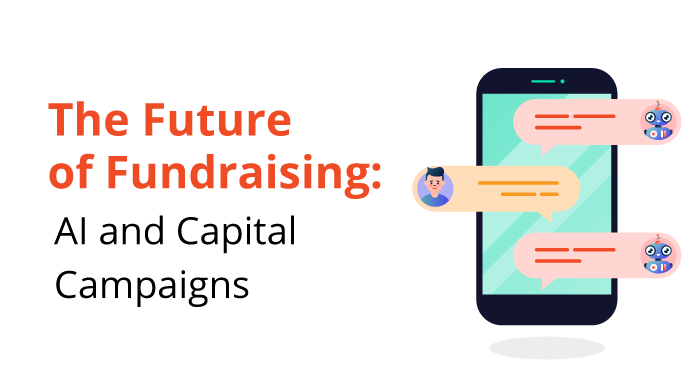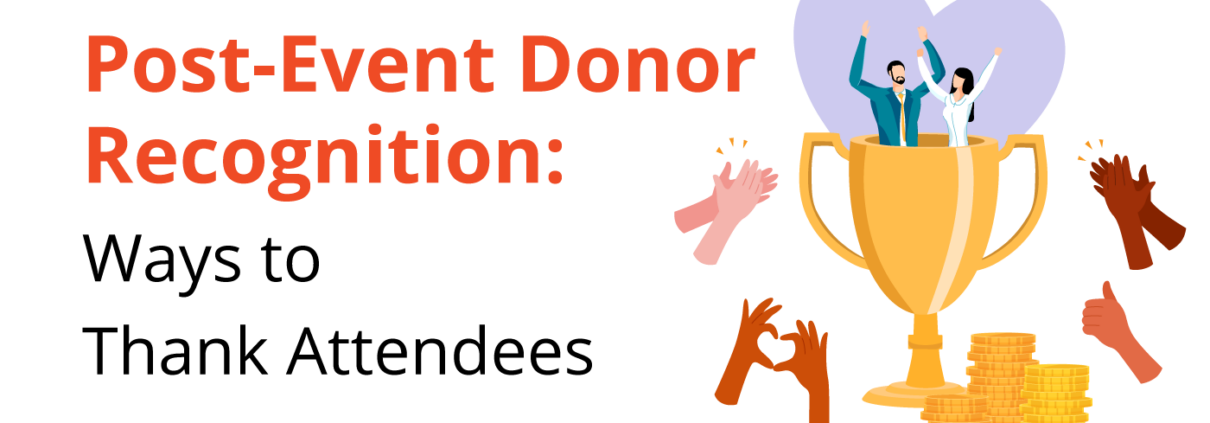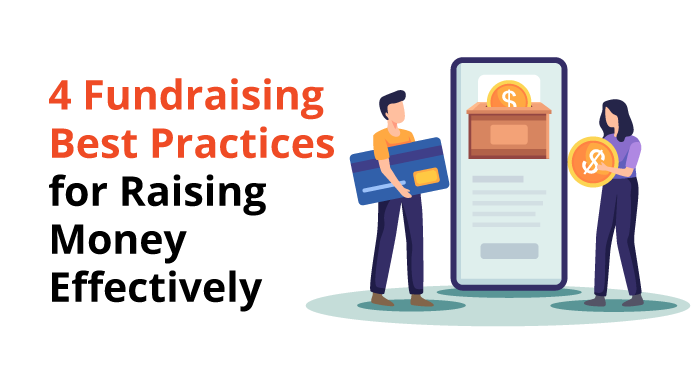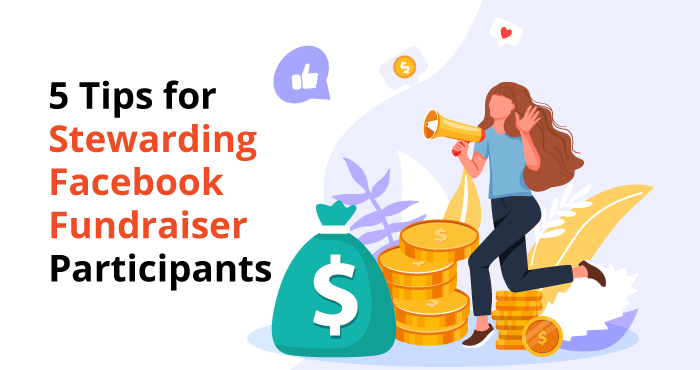Using Both Online and Offline Fundraising Strategies: 5 Tips
In this post-COVID era, it can be easy to feel unsure about what route to take with your nonprofit’s fundraising efforts. On the one hand, you’ve likely become more comfortable with digital fundraising, virtual or hybrid events, and online outreach strategies. After all, these are the tactics you’ve had to employ over 2020, 2021, and into 2022 to help your nonprofit stay afloat. But on the other hand, life is finally starting to go back to normal. You and your team might be itching to embrace the “real” world again and plan in-person events, volunteer opportunities, and other programming.
It can be difficult to decide between an online or offline approach, especially when it comes to fundraising. But we have some good news for you—you can have the best of both worlds by using strategies from both online and offline fundraisers.
You don’t have to abandon your online fundraising work in favor of in-person campaigns, or vice versa. You just need to harness the strategies you’ve learned from each in order to supercharge your next fundraising campaign.
In this post, we’ll give you five tips for successful fundraising that incorporates both online and offline strategies:
- Keep your branding consistent across all marketing channels.
- Personalize your marketing materials.
- Direct donors to your online donation form.
- Send personalized thank yous to your donors.
- Gather and analyze fundraising data.
1. Keep your branding consistent across all marketing channels.
Whether you’re planning an in-person dance-a-thon or a virtual auction, you’re going to need a solid marketing plan that uses both print and online marketing materials if you want to reach as many of your supporters as you can.
Effective and consistent branding will be critical no matter what kind of marketing material you’re designing. This helps your supporters (and potential supporters) identify and recognize your organization. Branding includes any colors, fonts, images, designs, and logos you use to distinguish your organization from others in the nonprofit sector. There are two things to keep in mind when branding your marketing materials:
- Keep your branding simple. Don’t overdo it with loud colors, crazy fonts, and cluttered designs. A good rule of thumb is to stick to just a few appealing colors and keep it simple.
- Stay consistent across mediums and match your branding across your organization’s operations. If your branding on your social media ads doesn’t match the branding on your fundraising letters or volunteer websites, your supporters can be easily confused and will likely view your nonprofit as unprofessional and unorganized. Coordinate with your entire team to make sure your brand is represented consistently across all of your operations and promotional materials.
When you brand your marketing materials to be consistent with the rest of your organization’s operations, you can be better prepared to meet every supporter where they are, whether they interact with your organization through direct mail or Instagram posts. And the more people you can reach through your marketing strategies, the higher your fundraising potential is.
2. Personalize your marketing materials.
Another way of meeting donors where they are is to personalize your marketing materials. Though direct mail often helps you communicate a more “personal touch” from your organization, you should also take the opportunity to personalize your online fundraising appeals, too. Try some of these strategies:
- Segment your audience and target different groups accordingly. Sort your donors into groups based on shared characteristics like average gift size, preferred communication method, gender, and age. For example, you might notice that one of your segmented audiences is younger people who respond well to tweets. You then know how best to reach that portion of your audience and can personalize your approach when it comes to marketing your fundraiser to them.
- Use supporters’ names. An effective fundraising appeal reads like it’s written just for you. One of the best ways to make your donors feel seen as individuals is to address them by name in your marketing materials. “Dear Marie,” or “Hello, Bill” will make emails or other communications feel much more personal than something plain and generalized like “Dear Donor.”
- Thank your donor specifically for past contributions. A donor will be much more likely to get involved in your new fundraiser if you thank them for past monetary donations or volunteer work. Specific thank yous make a donor feel like their contribution wasn’t lost on your organization and like they actually helped you make a difference. This in turn increases their loyalty to your nonprofit and your cause.
- Position the donor as the hero. Let your donors know what is possible because of them, not because of your organization. Use phrases like, “Donors like you gave over $15,000 last year to fight hunger in our state,” instead of “We spent $15,000 last year fighting hunger in our state.” To get your donors reading your online fundraising letters or emails, you have to put the focus on them and let them know how important they are to your organization’s ability to accomplish its mission.
Use these personalization strategies to reach each individual supporter, whether you’re communicating with them through an email or a tweet. Once a supporter feels like they really matter to your nonprofit and your mission, they’ll be more inclined to participate in your newest fundraising push.
3. Direct donors to your online donation form.
Your donation form is where the actual act of giving happens the majority of the time, so you have to find creative ways to direct your donors to it. While having consistent branding and personalizing your fundraising appeals will certainly help your donors get there, there are a few other things you can do, both online and offline, to guide them to your donation form. These include:
- Putting a QR code to your donation form on your fundraising letter or postcard. Incorporating a QR code on a printed letter is a great way to merge online and offline fundraising approaches. The recipient of your fundraising letter can simply scan the QR code and go directly to your donation form to complete their transaction. Make sure your donation page and form are optimized for mobile devices, and, just to be safe, include the web address and donate-by-mail options so that donors feel that they can give in the way that works best for them.
- Informing donors about how they can check their matching gift eligibility on your donation page. According to 360MatchPro’s matching gift statistics, 65 percent of Fortune 500 companies offer donation matching to their employees. Sometimes, however, people aren’t aware of the opportunity to have their gift matched. You can solve that problem by partnering with a software provider that allows you to include a searchable database tool directly on your donation form and by providing resources that educate people about matching gifts. Mail a brochure or write a blog post on your website about matching gifts and how donors can find out if their employer participates.
- Using CTAs on your print materials. We usually talk about calls to action, or CTAs, in terms of websites. Many nonprofits use CTA buttons on their sites that say things like “Join the fight to end cancer!” or “Donate now!” which take supporters to a donation form. Why not apply the same idea to your print materials? You can always use a CTA phrase in a fundraising letter or postcard, or even replicate a CTA button in print by writing out a CTA and then including a QR code with it.
- Including links to your donation form on your social media posts. It’s obvious that having a healthy flow of traffic between your website and your social media pages is beneficial to your nonprofit. But are you linking to your donation form on a regular basis? Make sure to provide links to your donation form in your Facebook statuses, Instagram bio, and tweets as you see fit. However, avoid linking to the form too much—you don’t want to seem overly pushy about getting donations.
Take these ideas for driving supporters to your donation form and modify them to meet both your organization’s and your donors’ needs. Using fundraising data can help you determine the most effective way to do this.
4. Send personalized thank yous to your donors.
It’s easy to feel like a fundraiser is over once the last donation has been counted. But you can’t let your nonprofit miss out on the opportunity to thank your donors, which helps with donor retention.
Placing an emphasis on retention is critical because stewarding existing donors is more cost-effective than constantly acquiring new givers. That means you need to work hard to thank your donors for their contributions.
Many nonprofits ensure that a donor is thanked right after donating online and then send a more personalized email or thank-you letter. You can also get more creative in how you thank your supporters. For example, you might send a personalized thank-you postcard, create a short thank-you video to email out, mail out free swag, or even message individual supporters on Facebook.
However you decide to thank your donors, be sure to be specific. Thank them by name, identify what they’ve contributed, and tell them how their donation will be used to further your cause.
You’re probably noticing a trend—this is yet another way you can meet your supporters where they’re at! Some of your donors will respond better to a thank-you video than free swag, so pay attention to your audience’s needs and work with your team to meet them.
5. Gather and analyze fundraising data.
After your fundraiser is over, you’ll need to get an idea of how effective it actually was. You can do that by gathering and then analyzing the data about your fundraiser. You might decide to track the following throughout your campaign:
- Traffic generated through your QR code
- The way traffic is driven to your donation page
- Average donation amount
- Donor demographics such as age, area of residence, and gender
You and your team can use data like this not only to determine whether you should opt for an in-person fundraiser or virtual fundraiser next. You can also see what kinds of donors you’re reaching with your multichannel approach to marketing and fundraising, and determine how you can better connect with them and retain their support far into the future.
Even though the pandemic is hopefully coming to an end, you don’t have to throw virtual fundraising out the window. Instead, take the things you’ve learned from online fundraising and apply them to your in-person efforts, and vice versa. This will help you not only increase your fundraising potential, but will also increase your ability to connect with your supporters in new and more meaningful ways, ensuring that they’ll remain loyal to your nonprofit and your cause.





